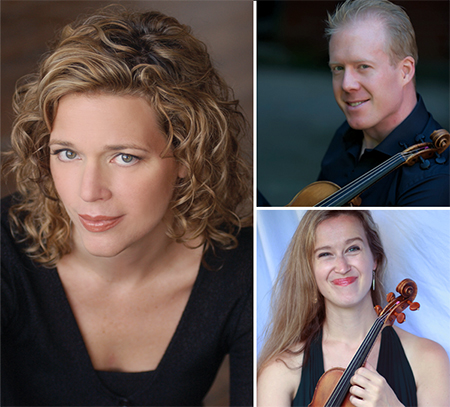by David Kulma

Meyer explained in his remarks from the podium that it is rare for him to craft a program with music from such a small window of time. The resulting program achieved a pleasing variety with a work from a little-known French composer of color, an early vocal showpiece by Beethoven, and the famous 40th Symphony of Mozart.
The program opened with Joseph Bologne, Chevalier de Saint-Georges’s Symphonie Concertante in G for two violins. In two movements, this Concertante offers the opportunity for a pleasant display of virtuosity that was ably handled by concertmaster Ken Johnston and principal second Emily Cornelius. The two traded refined melodic passages and flashy scales, and then played smoothly harmonizing thirds as Meyer led the BlueWater strings through the spunky accompaniment. The minor-key sections in each movement added some storminess to the sunny proceedings, but the overall effect was that of a musical amuse-bouche, Johnston and Cornelius’s lovely phrasing and virtuosity providing its memorable topping.
Soprano Laura Pedersen was featured in Beethoven’s early concert aria Ah! Perfido. With a dramatic text taken from an opera about Achilles, the aria’s female protagonist both rages and laments through a multi-stage journey. Pedersen’s imposing vocalism and sense of character fitted the music beautifully. The lengthy recitative was impassioned, while the songful cantabile had wisps of sorrow, and the powerful cabaletta brought this complex scena to an imposing close. Meyer and his players effectively conjured the storms and trickling rivulets over which Pedersen painted her sonic picture.
The concert concluded with a strikingly cohesive reading of the Mozart symphony. Meyer’s tempos were well selected. The first movement emphasized broad phrases that created a smooth, expressive flow. The tempo of the second movement gave it lightness, while the stateliness of the minuet was just right, and conductor and ensemble brought ample excitement to the finale.
Published on ClevelandClassical.com February 17, 2020.
Click here for a printable copy of this article



